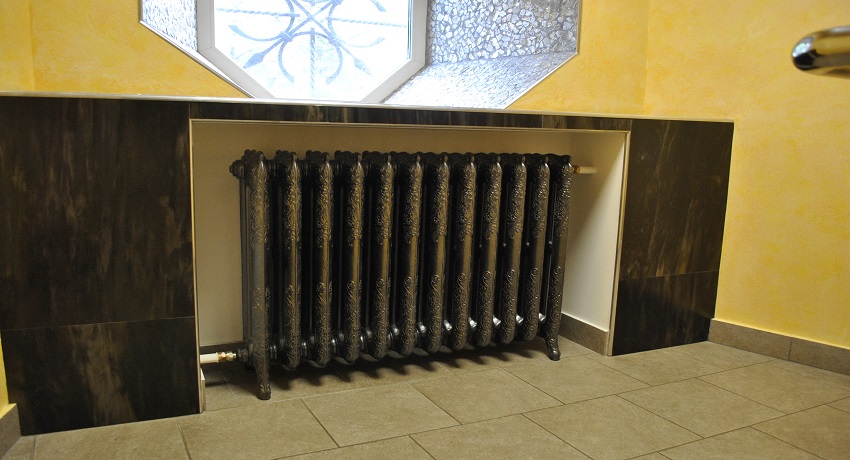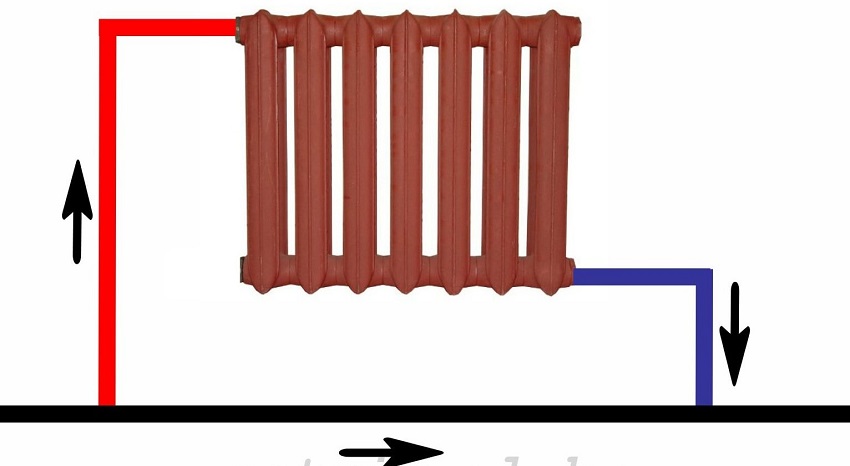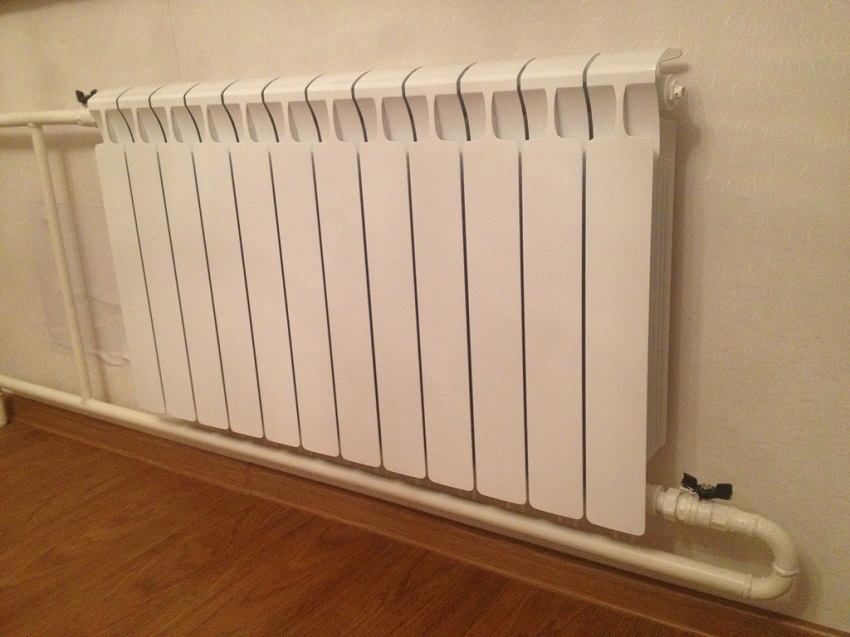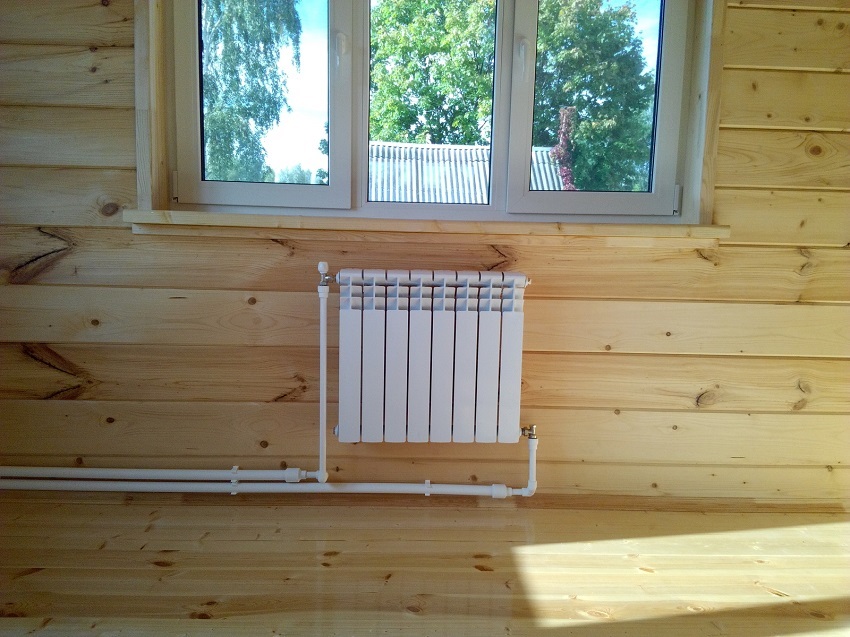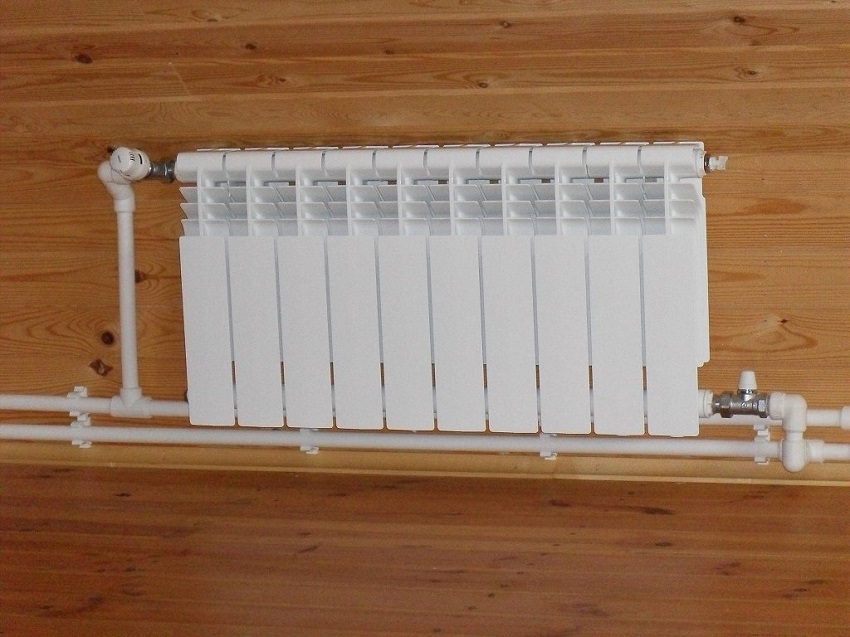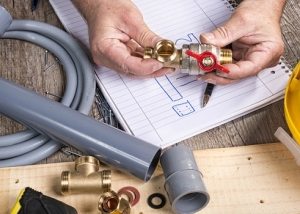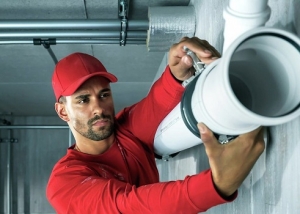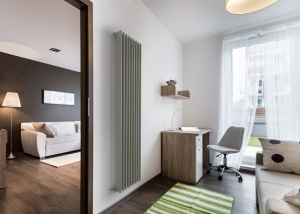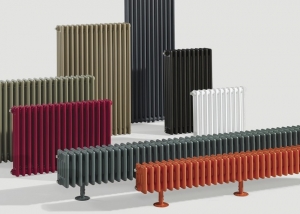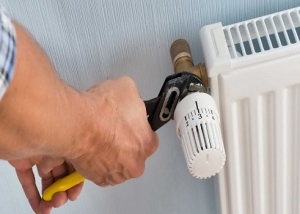Diagonal connection of heating radiators is one of the most common installation methods. It is rarely used in urban apartments with central heating, although it has many advantages. Such a connection has much in common with the lateral supply of the coolant, but its distribution, heat transfer and cooling occurs a little differently.
Content
Ways to rationally connect a heating device
Radiator heat loss depends on several factors, including the way the pipes are routed. At least two pipes lead to the battery:
- supply coolant;
- diverting.
The coolant is supplied from above, less often from below. Most of the heat goes to heating the surface of the heater. From it, air sliding from cold windows warms up, a peculiar thermal curtain is formed. However, the distribution of the coolant inside the ribbed battery occurs in different ways, depending on which side the cooled water is discharged from.
When installing heating, different methods of shorting to a single-pipe circuit are used:
- coolant supply from above;
- bottom connection;
- lateral;
- cross or diagonal connection of heating radiators.
These methods differ in terms of efficiency, in terms of heat transfer - up to 20-25%. Each of them has its own advantages and disadvantages, but a certain percentage of specialists prefer the diagonal method. As can be seen in the figure, in this case, the distribution of hot water inside the heat block for heating the room is more complete. In this case, the length of the battery does not matter.
The difference between the diagonal connection of heating radiators
The diagonal battery connection diagram is the best option for a single-pipe coolant supply system. It is with this method that hot water is distributed most efficiently. In the case where there are more than 12 sections in one battery, special nozzles are used, designed for deep flow of the flow into the heater.
Advice! To clarify how many radiator sections are needed per room, a power calculation using a special calculator is used.
With this scheme, the coolant diagonally passes through the entire volume, evenly warming each section. This is fundamentally different from other methods of supplying hot water when warmer and colder zones of radiators are formed. In this case, only a few batteries work, half remains cold with hot risers.
This phenomenon is faced by many residents of urban apartments, where the batteries are powered sideways. The efficiency of the radiator depends not only on the connection method, but also on some other components:
- the internal volume of the radiator sections;
- coolant temperature;
- metal and wall thickness of equipment;
- availability of components (bypass, powerful pump);
- connection diagram of other radiators;
- remoteness of radiators from the heating source (boiler);
- proper installation of a separate battery and the entire circuit.
Important! It does not make sense to grow sections to infinity, even if you digest the pipe connection diagram. Optimum heat transfer will be with the number of sections no more than 12-15 pieces. It is better to replace the old clogged radiators with new ones with high efficiency.
The principle of filing is very simple. In order to get the greatest heat transfer with a diagonal mounting method, the heat carrier supply pipe must enter the upper hole, and the exhaust pipe leaves the lower one on the opposite side. Hot water flows almost by gravity - from top to bottom, evenly distributed inside a metal container without pressure.
To organize the shutdown of the heating of the room, part of the circuit or one battery, shut-off valves are installed on the supply side, for example, a ball valve or adjustable bypass.
Features of the implementation of the diagonal scheme
The diagonal way of connecting heating batteries is acceptable for private houses and cottages of large area. This method has many advantages, including the possibility of using dimensional heating radiators with the largest number of sections. The design of the premises goes by the wayside when it comes to a comfortable microclimate. When installing the heating pipe, you can hide it behind furniture, decor elements and window curtains.
The effectiveness of this method is due to physical laws - warm masses rise upward from a uniformly heated heating device. Cold water goes down the radiator and discharged into the pipes. There is no need to circulate water under high pressure through small nozzles.
In a private house, natural circulation is most often used:
- The coolant is first supplied under pressure from the pump.
- Further along the contour from top to bottom by gravity.
- In the battery - diagonally, distributing heat throughout the heater.
If the circuit in a private house works inefficiently, it is worth remaking it, even if everything looks aesthetically pleasing. The diagonal way of installing batteries is quite accessible for independent implementation, if you have the skills of a welder or plumber.
Note! All batteries must be aligned horizontally to prevent air pollution and deposits of calcium deposits and rust. Use the universal construction level for marking.
Recommendations for connecting radiators
A well-organized installation process should begin with the preparation of tools and accessories. You will need:
- radiator with brackets for wall mounting;
- level, square and chalk for marking;
- shutoff valves and Mayevsky cranes (to let out air);
- mounting couplings, fittings and adapters (if pipes of larger diameter are used than radiator headers);
- pipes for supplying coolant;
- You can purchase additional equipment (heat meters, temperature switches, thermal heads).
The radiator is mounted in the window sill before being connected to the heating circuit pipe. Usually use metal hooks, screws and dowels, but usually there are brackets included in the kit. Modern cast iron batteries have an innovation - they began to be released on legs to ease pressure on the walls. It is best to install it in the center, regardless of the size and length of the window sill, to which an interval of at least 10-15 cm is maintained. From the floor, something like this the distance to the wall is not less than 5-7 cm (errors are permissible). If the radiator is placed against a wall, it can be mounted directly to a vertical plane.
Helpful advice! To increase heat transfer, experts recommend that a reflective foil screen be mounted on the walls behind the radiators. A simple measure will make the room warmer. And battery efficiency will increase by 25-30%.
In the nozzles for supply and return are installed "American", special threaded couplings that facilitate installation. Shut-off valves - shut-off valves that are needed to disconnect a separate heater from the general circuit. This may be needed in different cases:
- repair of a part of the circuit;
- battery cleaning;
- elimination of leaks at the joints.
If you cut off one room during the heating season in the event of an accident or emergency, the rest of the heating will work as usual. As you can see, there is nothing complicated in the diagonal connection of heating radiators. This scheme may be most effective for the private sector if everything is connected correctly.
